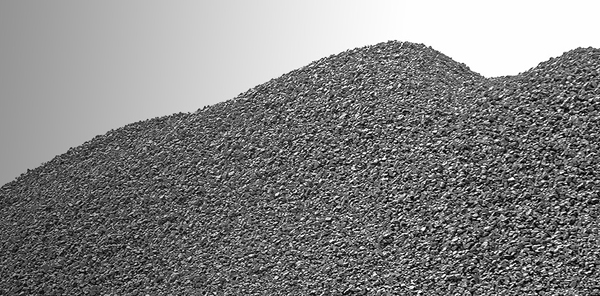
Calcined Petroleum Coke (CPC) is a versatile carbon-rich material that plays a vital role in various industrial applications. The quality and properties of CPC largely depend on the selection and characteristics of its raw materials. In this article, we explore the essential raw materials used in CPC production, their impact on product quality, and the challenges in sourcing these materials.

The primary raw material for CPC production is raw petroleum coke, often referred to as "green coke." This carbon-rich material is a byproduct of the oil refining process. It is obtained from the distillation of crude oil, where heavy hydrocarbons are removed, leaving behind a solid residue. Green coke typically contains a considerable amount of carbon, as well as impurities such as sulfur, metals, and volatile matter.
The quality of the green coke significantly influences the final quality of CPC. Lower sulfur and metal content in green coke are desirable, as they can be detrimental to the performance of the finished product. Moreover, the consistency and homogeneity of green coke play a crucial role in ensuring product quality.
Sulfur content is one of the most critical parameters in green coke. High sulfur content can lead to the formation of sulfur dioxide (SO2) emissions when used in industrial processes, which is not only environmentally undesirable but can also hinder compliance with environmental regulations. For this reason, green coke with low sulfur content is preferred, particularly in applications like aluminum smelting, where the production process must meet strict environmental standards.
Metals, such as vanadium, nickel, and iron, are considered impurities in green coke. These metals can negatively impact the performance of CPC in various applications. For instance, vanadium and nickel can act as catalyst poisons, disrupting specific industrial processes. Therefore, the limitation of metal content in green coke is essential for ensuring the quality and suitability of CPC.
Volatile matter in green coke represents the percentage of material that will vaporize when heated. High volatile matter can affect the handling and processing of green coke. Additionally, it impacts the performance of CPC in industrial applications. Precise control of volatile matter content is necessary to meet specific product requirements.
To ensure the quality of raw petroleum coke, producers implement stringent quality control measures. This includes regular sampling and analysis of the incoming feedstock to verify that it meets the desired specifications. Advanced analytical techniques, such as X-ray fluorescence (XRF) and combustion analysis, are employed to determine the elemental composition, including carbon, sulfur, and metals. These analyses help in maintaining consistency and adherence to product quality standards.
The availability and quality of raw petroleum coke can be influenced by various factors. Market dynamics, such as fluctuations in the oil and gas industry, can affect the supply and pricing of feedstock. Geopolitical events, trade policies, and economic conditions can also influence the accessibility of raw materials. Additionally, producers must consider the environmental impact of raw petroleum coke sourcing, striving to maintain responsible and sustainable supply chains.
To meet specific product quality requirements, CPC producers may engage in blending and homogenization processes. These involve mixing different grades of green coke to achieve the desired carbon content and reduce impurities. The blending and homogenization steps are critical to ensuring that CPC consistently meets customer specifications.
Raw petroleum coke is the cornerstone of Calcined Petroleum Coke production. The careful selection of high-quality green coke and rigorous quality control throughout the production process are essential to creating CPC with the desired properties and performance. The critical parameters to consider include sulfur content, metal content, volatile matter, and carbon content, all of which influence the suitability of CPC for various industrial applications.
As the demand for CPC continues to grow, securing a consistent and high-quality supply of raw materials remains a priority for producers. Moreover, in an era of increasing environmental awareness and regulation, the responsible sourcing and sustainable production of raw materials for CPC have become crucial considerations. The CPC industry must navigate these challenges while maintaining the integrity and reliability of its products. Raw materials serve as the foundation upon which the quality and success of CPC production are built.

Write a Message